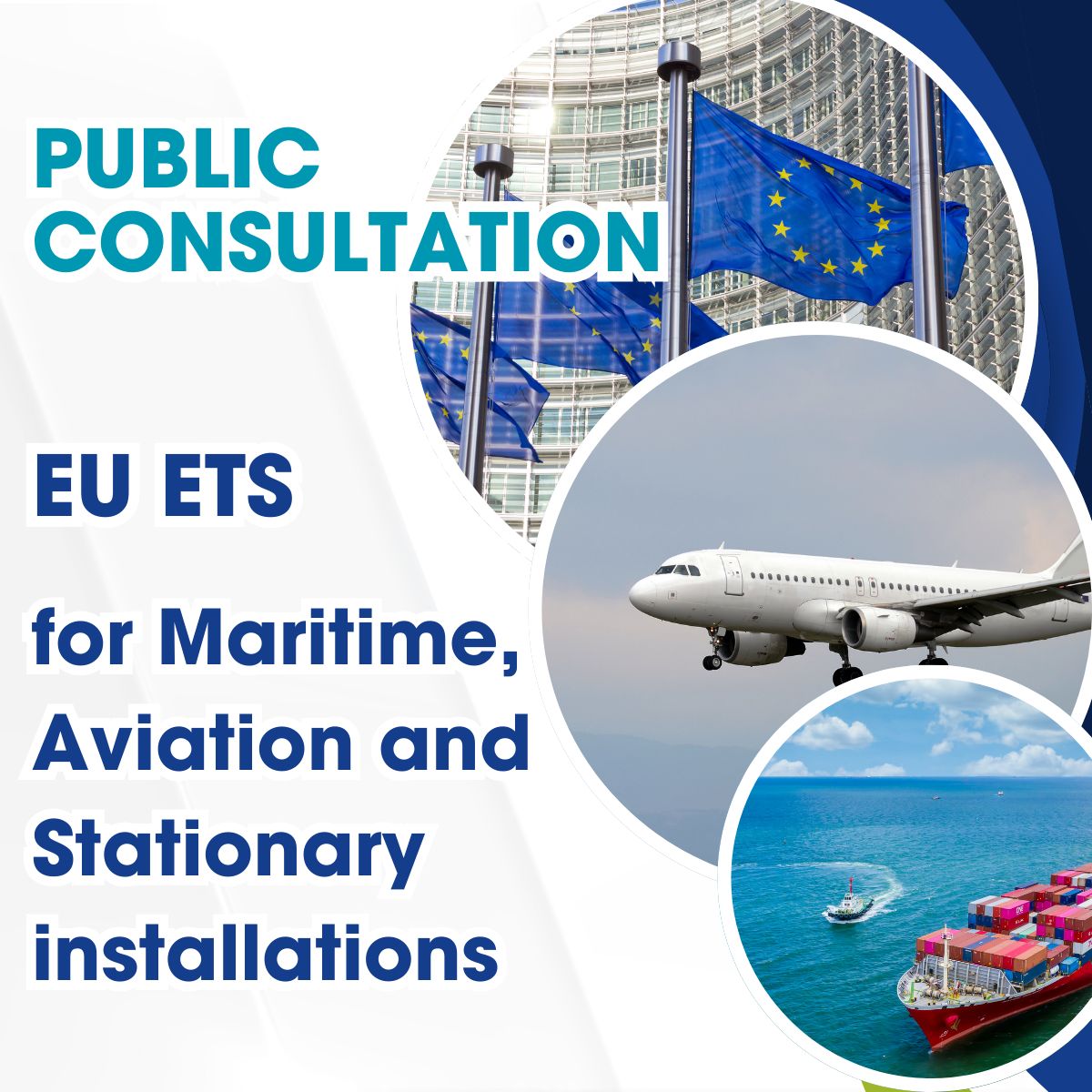Public Consultations. EU ETS for maritime, aviation and stationary installations

The European Commission has commenced the public consultation regarding EU ETS for maritime, aviation and stationary installations, and market stability reserve.
📄 Type of Act – Proposal for a Directive
📅 Feedback period – 14 April 2025 – 08 July 2025
✅ The following aspects are subject to review:
📌 Aviation emissions:
- the EU has temporarily limited the scope to intra-EEA flights that encourages the development of an effective global carbon pricing scheme by the ICAO.
- by mid-2026, the Commission should make a report on CORSIA.
- the ETS Directive suggests assessment criteria and indications on geographical scope.
📌 Maritime emissions:
- the European Commission will have to assess the GHG pricing mechanism and market-based measures that will possibly be adopted at the IMO in 2025 and review the ETS accordingly to avoid a significant double burden on maritime operators;
- the European Commission will have to consider extending the EU ETS to cover emissions from smaller ships (i.e. ships below 5 000 gross tonnage but not below 400 gross tonnage);
- the European Commission should monitor implementation of the recent extension of the EU ETS to maritime transport, and consider legislative improvements to ensure the effective implementation of the extension;
- the European Commission should simplify and improve the system where possible.
📌 Municipal waste incineration:
- This looks at the feasibility of including such installations in the EU ETS from 2028.
📌 Non-permanent carbon capture and use:
- the impact assessment will look at whether all GHG emissions covered by the EU ETS are effectively accounted for and whether double counting is being avoided, in particular regarding GHG emissions considered to have been captured and utilised in a product non-permanently.
📌 Carbon removals:
- the possible inclusion of domestic permanent carbon removals in the EU ETS.
- how the EU ETS could account for negative emissions resulting from GHGs that are removed from the atmosphere and safely and permanently stored underground or permanently stored in products;
- how those negative emissions, if appropriate, could be covered by ‘emissions trading’ or other policies, setting a clear scope and strict criteria;
- putting in place of safeguards to ensure that such removals do not offset necessary emissions reductions.
☑️ WHAT NEXT?
📌 At the end of this consultation process, a factual summary report and a synopsis report will be drafted.
📌 The Commission Adoption – Q3 2026.
